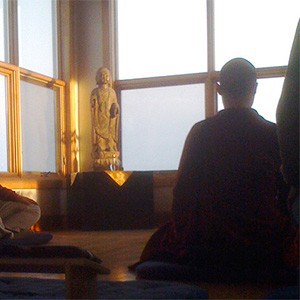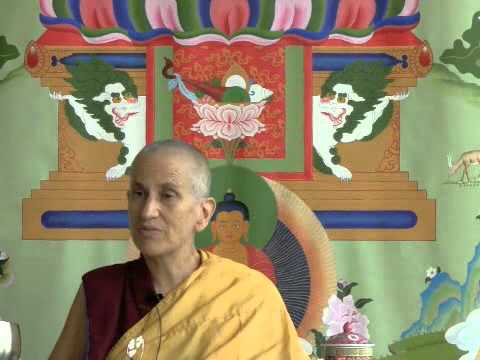Preliminary practice (ngöndro) overview

An introduction to the practices that help clear and purify our minds.

We do ngöndro to clear and enrich our minds so that our practice progresses smoothly. (Photo by Davee)
Our mind is often compared to a field, with the potential to bring forth bountiful harvest of wisdom and compassion. For the seeds of listening to teachings to grow easily and quickly, the field needs to be properly prepared: purifying negative karmic imprints is similar to clearing the field of rocks and debris, while enriching our mind with positive potential is similar to irrigating and fertilizing the field. The purpose of preliminary practices is thus to clear and enrich our minds, allowing our practice to progress smoothly and our heart to become the path to enlightenment. This process of clearing and enriching has multiple functions:
It clears away the karmic debris from previous unskillful actions that obscures our mind from understanding the Dharma. Sometimes we go to teachings and doze off. Other times we are distracted by the monkey mind chasing one thing after another. Sometimes we are awake and listen, but we don’t understand very much. Other times we listen to teachings and are filled with doubt or anger. These kinds of obscurations are cleared away by the preliminary practices and when we listen to teachings they are able to touch our hearts deeply.
- To continue to practice over many lifetimes, we need to create the causes for a series of precious human lives and to neutralize the causes for unfortunate rebirths that we have previously created. Otherwise, our practice may progress well this lifetime, but we won’t have the opportunity to continue it the next lifetime due to the ripening of negative karma at the time of death. Or we may get a precious human life next rebirth, but be beset by illness, social upheaval, poverty, depression and the like, making practice difficult. It may be difficult to find a qualified spiritual guide or supportive Dharma group. By purifying causes for these obstacles and creating causes for conducive circumstances, our practice will gradually and continuously bear fruit.
- When we meditate, our minds may encounter hindrances—mental agitation and laxity, laziness and lack of mindfulness, too little or too much application of antidotes. The preliminary practices clear away many of these hindrances. They also sharpen our mindfulness and introspective alertness so that we can recognize hindrances and apply the antidotes quickly and effectively.
- On a psychological level, the preliminary practices alleviate much of the guilt and uncomfortable feelings we have been carrying around for years. Such feelings may be due to previous negative actions that we have done which we have never looked at honestly and resolved. Other feelings may be due to harmful situations we have experienced which have generated unrecognized emotions or otherwise adversely affected our psychological well-being. The preliminary practices give us the opportunity to look at our past honestly, from the perspective of the Dharma, under the kind gaze of Buddha and with the support and encouragement of the Sangha. Processing and resolving these situations, we lay aside cumulative psychological baggage, and we are then able to make strong determinations and aspirations regarding how we want to be and act in the future.
The preliminary practices are sometimes enumerated as five or nine:
- Prostrations: These are done to the 35 Buddhas, together with reciting their names and the confession prayer.
- Vajrasattva (Dorje Sampa) mantra: This is done with the Vajrasattva practice and visualization.
- Refuge: This is reciting Namo Gurubhya, Namo Buddhaya, Namo Dharmaya, Namo Sanghaya while visualizing the field of positive potential.
- Mandala offering: This involves reciting the refuge and bodhicitta prayer and the mandala offering verse, while visualizing offering the entire universe and everything beautiful in it to the Buddha, Dharma and Sangha.
- Guru Yoga: This is meditating on the inseparability of the Buddha’s mind, our spiritual mentor’s mind and our mind, together with visualization and mantra recitation.
- Dorje Khadro (Vajra Daka): Imagining black sesame seeds as the negativities of ourselves and others, we offer them in a fire to the mouth of the fierce deity Dorje Khadro, who swallows them with pleasure as if they were nectar.
- Water bowls: This is offering water bowls to the Buddha, Dharma and Sangha, together with visualization.
- Tsa-tsa: This is making clay or plaster images of the Buddha.
- Samaya Vajra (Damtsig Dorje) mantra: This is reciting the mantra of this Buddha together with visualization.
Traditionally these practices are done 100,000 times, with an extra 11 percent to make up for any mistakes we may make in doing them. The number itself is not important. As one lama put it, “It’s 100,000 opportunities to do the practice once with full concentration and faith.” The number gives us a goal to work towards and a sense of accomplishment when we have reached it. However, it is essential not to become “business oriented”, always calculating how many we’ve done in what length of time and then how long until we’re done. It’s also important not to compare the number we’ve done with that of our Dharma friends. We are not in competition here, and we are not trying to fulfill a quota set by an outside authority. Doing the preliminary practices is about transforming our hearts and minds. If we don’t try to do this, then it doesn’t matter how many recitations or offerings we’ve done, for we’re still locked in our old ways of competition.
There are various ways of doing the preliminary practices. Some people do a little of each practice every day. What is more common is to select one practice to emphasize, either doing a retreat with four sessions of that practice each day or doing some of that practice each day while living one’s regular life, until 100,000 are completed. With our teacher’s guidance, we select one of the preliminary practices to focus on, and in this latter way, do the practice each day usually in the morning and/or evening before or after work. It is helpful to have a group of Dharma friends who also are the doing the practice and meeting together once a week or so to practice and share experiences.
Doing one of the preliminary practices strengthens our daily practice, for we do that practice each day so that it really becomes part of us in a comfortable way. Having completed 100,000 of whichever practice, we often naturally incorporate it into our daily practices, doing it in a shorter form, although this is not necessary.
Some people may find counting awkward. Ways can be devised to have an approximate idea of how many are done in a certain time and to keep track of that. We don’t want to become “obsessed” with the numbers so that it distracts us from doing the practice.
We may wonder why these are called the preliminary practices, because some of them may seem rather advanced and designed for someone who is already clear about the path. From the viewpoint of a total newcomer, these practices are advanced, because they presuppose an understanding of and faith in the operation of cause and effect and refuge in the Triple Gem. They are preliminary to engaging in practices of the Highest Yoga Tantra, and doing retreats on these practices, and they are preliminary to gaining deep realizations of the path. Some Westerners have questioned their necessity, and to this His Holiness the Dalai Lama responded that for those very few people who have done serious purification, collection of positive potential, and deep meditation in previous lives, these practices are not so necessary now in order to gain realizations. However, for the rest of us, they are important.
Another doubt may arise that these practices seem culturally conditioned and not appropriate for Westerners. It’s true that these practices may seem foreign to us. It takes a while to understand them, and such an understanding comes by doing them, not by having all of our intellectual skepticism satisfied beforehand. That doesn’t mean we should do them with undiscriminating faith, but rather we must recognize and resolve the doubts that come up as part of the practice. We are called to examine the Dharma and our conviction in it at a deeper level. We are challenged to learn and explore more, to look at our minds more deeply. Of course, not everything will be clear from the beginning, but the doubts, resistance and obstacles that arise while doing the preliminary practices are among the very things we are trying to purify. If a cloth has been badly soiled, the only way to clean it is for the dirt to come out. If there’s no dirty water, there will be no clean cloth. The only way to purify and enrich our minds is to work with our obstacles, by accepting ourselves and simultaneously having deep confidence in our Buddha potential. The transformation occurs slowly, but if we keep on with our practice, we will definitely experience it.
How does one go about beginning the Preliminary Practices? First, tell your spiritual mentor that you would like to do one or all of them and discuss with him or her which one to start with. It may be that you’re more attracted or more familiar with one practice than the others, so it’s often advisable to begin with that one. However, a mentor who knows you well may recommend that you begin with a specific practice. He or she will then give you either the oral transmission (Tibetan: lung), permission initiation (Tibetan: jenang), or full initiation (Tibetan: wong) for that practice, according to which practice it is. You should then request teachings on how to do the practice and learn well what your teacher instructs. Your mentor may also refer you to books or to transcripts of teachings he or she has given on the practice before. Study these well and ask any questions you may have.
Be clear in your mind if you’re going to do that practice as a retreat or as part of a daily practice and keep the appropriate discipline. For example, many people do Vajrasattva as a group retreat. In that case, part of the retreat discipline is to keep silence, stay for the duration of the retreat, do all 100,000 (actually 111,111) mantra recitations at the same place, and so forth. If you aim to complete 100,000 of any of the Ngondro, it’s essential to do the practice at least once every day to keep the continuity. If you miss a day, then begin counting all over again. If you are very sick, then do at least three mantra or three prostrations, etc. to maintain the continuity until you feel well enough to return to the practice schedule you’d had before.
Knowing the Gradual Path to Enlightenment (Lamrim) and Thought Transformation (Lojong) teachings well before beginning Ngondro is very helpful. Because the Ngondro practices emphasize purification, it’s common for old memories and issues to surface. In fact, these practices will definitely make our dysfunctional emotional patterns, doubts about practice, and so forth arise. This is completely normal and to be expected, because it is exactly these things that we are trying to purify. We must know how to work with these skillfully as well as know how to handle the various distractions that arise. Lamrim and Thought Transformation practice are excellent methods for this. For example, when you find anger arising while you’re practicing, employ the antidotes—meditations on patience and loving kindness. When attachment is preoccupying your mind, meditate on impermanence and the unsatisfactory nature of cyclic existence. If questions come up while you’re working on a particular practice, ask your teacher or a learned Dharma friend for help. Listen to their advice and apply it.
To have the opportunity to do the preliminary practices, we must have accumulated great positive potential in the past. Rejoice in that and determine to continue on the path to enlightenment. Be willing to undergo the difficulties entailed in working with your mind skillfully and be happy that you’ve met the Dharma and have the chance to practice. Generate your bodhicitta motivation again and again and think of how your practice benefits yourself and others.
Venerable Thubten Chodron
Venerable Chodron emphasizes the practical application of Buddha’s teachings in our daily lives and is especially skilled at explaining them in ways easily understood and practiced by Westerners. She is well known for her warm, humorous, and lucid teachings. She was ordained as a Buddhist nun in 1977 by Kyabje Ling Rinpoche in Dharamsala, India, and in 1986 she received bhikshuni (full) ordination in Taiwan. Read her full bio.


